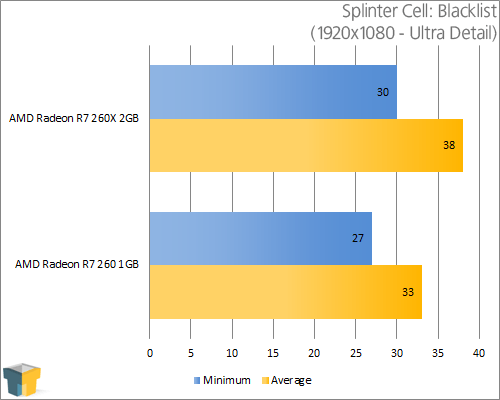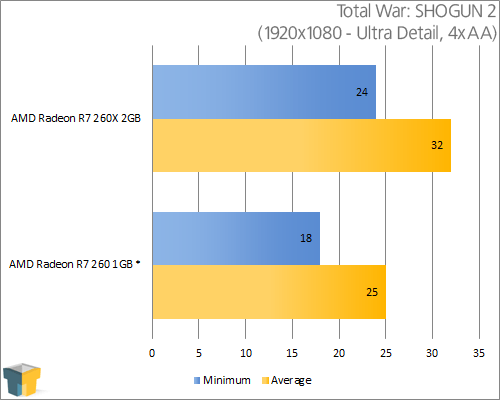- Qualcomm Launches Snapdragon 4 Gen 2 Mobile Platform
- AMD Launches Ryzen PRO 7000 Series Mobile & Desktop Platform
- Intel Launches Sleek Single-Slot Arc Pro A60 Workstation Graphics Card
- NVIDIA Announces Latest Ada Lovelace Additions: GeForce RTX 4060 Ti & RTX 4060
- Maxon Redshift With AMD Radeon GPU Rendering Support Now Available
The $109 Console-killer GPU: AMD’s Radeon R7 260 Graphics Card Reviewed

No one should be surprised at the fact that testing out $500 graphics cards is fun, but with the right perspective, budget cards can be, too. Take the $109 AMD Radeon R7 260, for example, which has debuted following flagship console releases. With that in mind, let’s see what such an affordable GPU can pull off at the much-loved 1080p resolution.
Page 6 – Game Tests: Splinter Cell: Blacklist, Total War: SHOGUN 2
Tom Clancy is responsible for a countless number of video games, but his Splinter Cell series has become something special, with each game released having been considered “great” overall. The latest in the series, Blacklist, is no exception, and thankfully for us, its graphics are fantastic, and not to mention intensive. For those who love a stealth element in their games, this is one that shouldn’t be skipped.
RIP, Tom Clancy.
Manual Run-through: From the start of the ‘Safehouse’ level in Benghazi, Libya, we progress through until we reach an apartment building that must be entered – this is where we end the FPS recording.

Blacklist is an absolute tank of a game, so it’s no surprise that we’re skirting with 30 FPS here.
Total War: SHOGUN 2
Strategy games are well-known for pushing the limits of any system, and few others do this as well as Total War: SHOGUN 2. It fully supports DX11, has huge battlefields to oversee with hundreds or thousands of units, and a ton of graphics options to adjust. It’s quite simply a beast of a game.
Manual Run-through: SHOGUN 2 is one of the few games in our suite where the built-in benchmark is opted for. Strategy games in particular are very difficult to benchmark, so this is where I become thankful to have the option of using a built-in benchmark.
 * Test run at 2xAA |
Thanks to the 1GB framebuffer, I was forced to reduce the anti-aliasing to 2x for the R7 260; otherwise, I wouldn’t have been able to provide a result at all. So with that in mind, the 260X offers a substantial performance improvement here; it could use a higher AA mode and still deliver 7 FPS more on average. Of the eight games we’ve tested here, this is the biggest gain we’ve seen, so it’s clear that SHOGUN 2 loves GPU memory.
Support our efforts! With ad revenue at an all-time low for written websites, we're relying more than ever on reader support to help us continue putting so much effort into this type of content. You can support us by becoming a Patron, or by using our Amazon shopping affiliate links listed through our articles. Thanks for your support!







